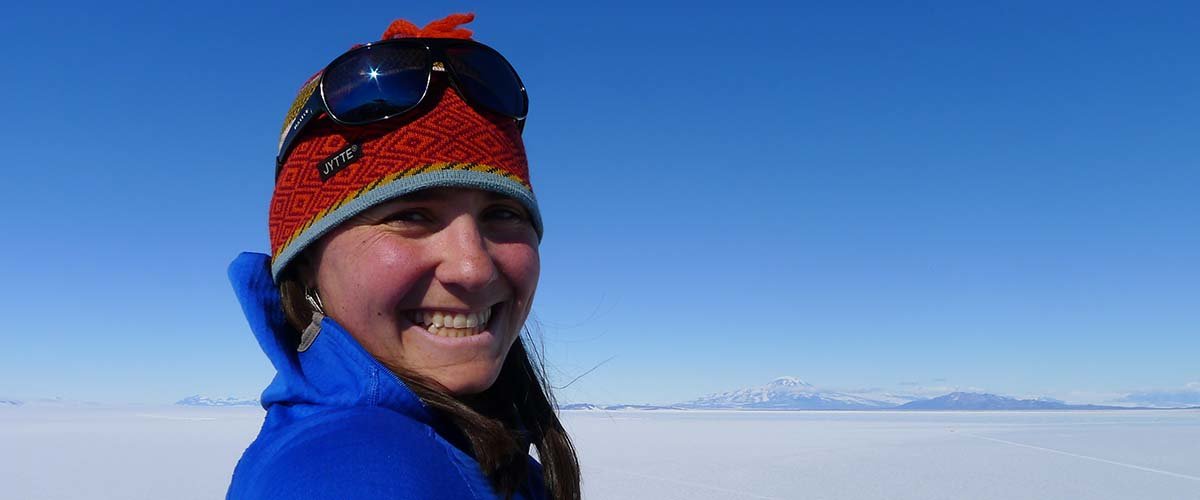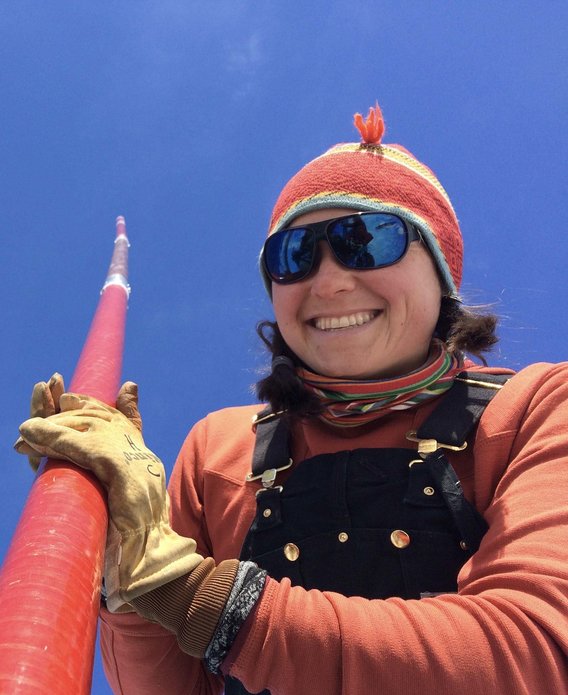
A conversation with Heidi Roop

Based at the U of M, climate expert Roop is working to change how the world engages with science
Meet Heidi Roop, Ph.D., a climate scientist with a passion for research and communication whose scientific endeavors have taken her around the world, where she has participated in research from Alaska and Antarctica to the mountains of Vietnam and New Zealand.
Throughout her scientific pursuits, Roop has prioritized sharing her science through teaching and public engagement. Today, she’s doing that at the University of Minnesota as an assistant professor of Climate Science in the Department of Soil, Water and Climate in the College of Food, Agricultural and Natural Resource Sciences (CFANS) and as an Extension Specialist in Climate Science.
Roop’s professional mission is to improve the reach and impact of climate science in order to engage, motivate and catalyze action around climate change. She combines climate science and science communication to connect climate change information to decision-makers and communities across the Midwest, U.S., and abroad. By producing actionable, relevant climate science, Roop helps diverse stakeholders prepare for a changing climate.
You joined the University of Minnesota in summer 2020. Are there some Minnesota-specific climate topics that you’re finding particularly interesting?
Roop: It is great to be in Minnesota and I feel like I’ve just begun my climate change learning journey here. When I think about climate impacts in Minnesota, there is almost always a connection to water. Similar to many places around the United States (and abroad) water is the great integrator of climate change. Regionally, we are already seeing changes in our rainfall, snowpack, rivers, and lakes. This water story is at least familiar, as I’m coming most recently from the wet Pacific Northwest where the climate story is also intricately linked to changing patterns in the water cycle – from rainfall and streamflow to changing snowpack and ocean conditions.
Climate change is often associated with changes in weather. What is the difference between weather and climate?
Roop: There are lots of great analogies that help describe the difference between weather and climate. One of my favorites is that you can think of climate like your personality and weather as your mood on any given day. Your mood can change frequently, like the weather, but your personality is a better overall indicator of who you are as a person. In that way, climate is the long-term, overarching setting, while weather captures day-to-day and seasonal changes.
Your professional mission is to improve the reach and impact of climate science to catalyze action around climate change. What are some of the key strategies you use to engage decision-makers and communities?
Roop: I enter any project or partnership with the same overarching goals: to first listen and learn, and then to find ways to authentically share knowledge and build dialogue to lead to the development of durable, community- and partner-specific solutions. The challenge with preparing for climate change is that there is no one-size-fits-all solution. In order to build strategies and solutions that work, we have to think holistically about systems, communities, people and sectors. What works in one location or in one industry, won’t be the right solution in another – that’s the challenge and opportunity of climate change. Together we can reduce our exposure to the risks of a changing climate while also helping to shape and build the communities, economies and broader society that we want. Part of this is about having a clear vision for our future – what do we value today that we want to protect for tomorrow? What needs to change or be reimagined? To achieve the future we want, we have to consider climate change. To identify the right actions, solutions and priorities to help us get there requires that we listen, acknowledge different perspectives and needs and then work collaboratively towards solutions. I firmly believe this approach will help lead to solutions and changes that are built to last, even as our climate changes.
What inspired you to pursue a career in climate science?
Roop: Truth be told, I never wanted to pursue a career in science. As I started my undergraduate career, I dreamt of a career in politics or diplomacy. That was all changed by a passionate, skilled professor who taught Environmental Geology at my undergraduate institution. His approach, content and investment in providing students with hands-on, applied learning opportunities got me hooked! After my first semester, having my eyes opened to the opportunity of climate science as a career, I switched my major to Geology. Today, in my role at the University of Minnesota, I feel like I get the best of both of these worlds — much of my work involves engaging with decision-makers and leaders across the region in how to use and apply climate science to make sound decisions and investments for our future. Doing this work means I’m often serving as an ambassador for science. Dreams do come true!






